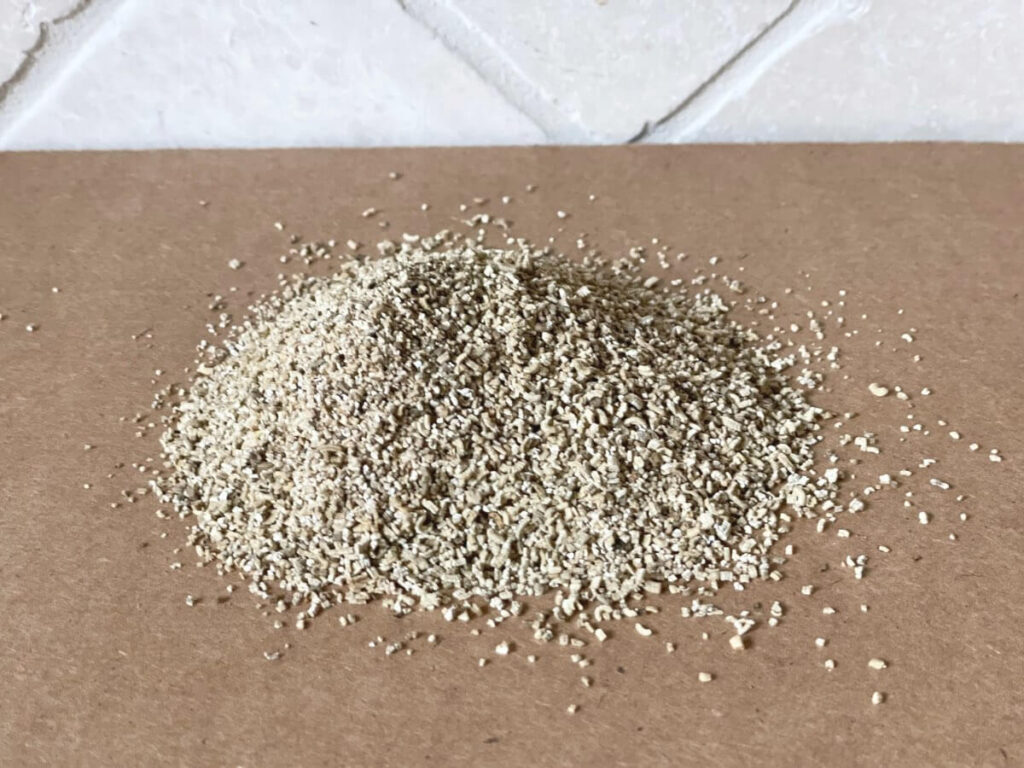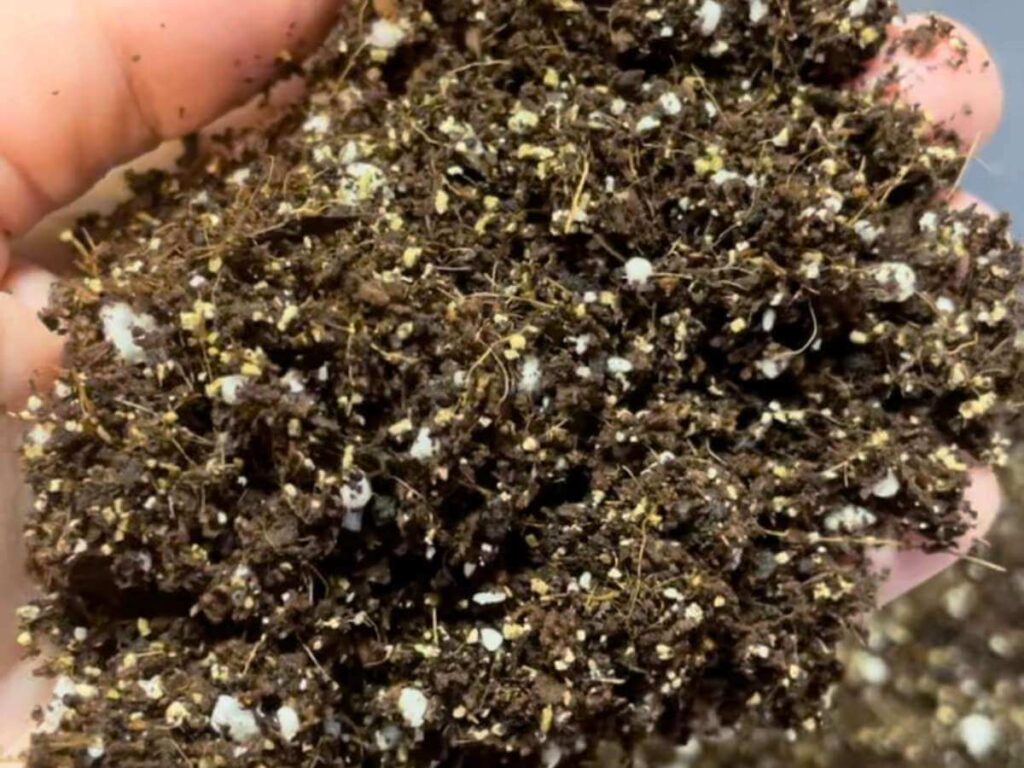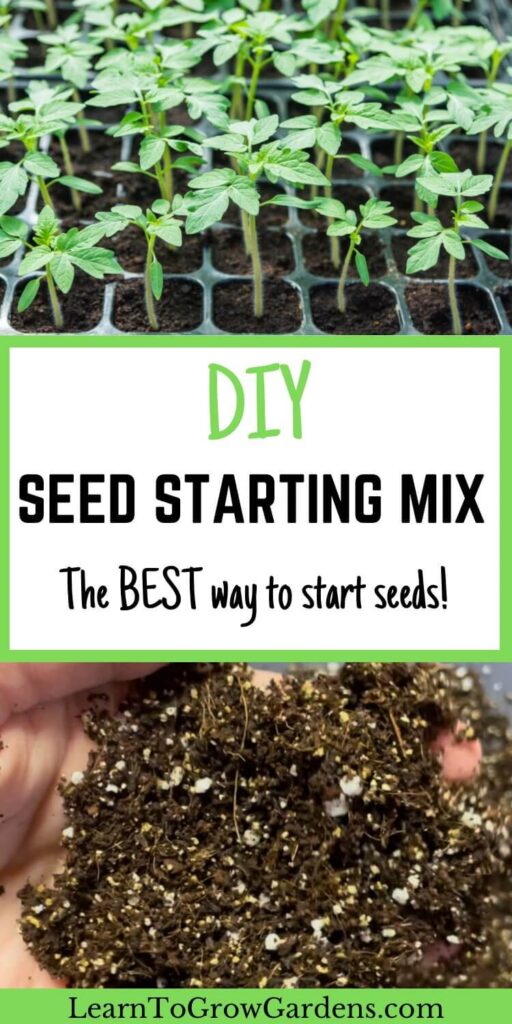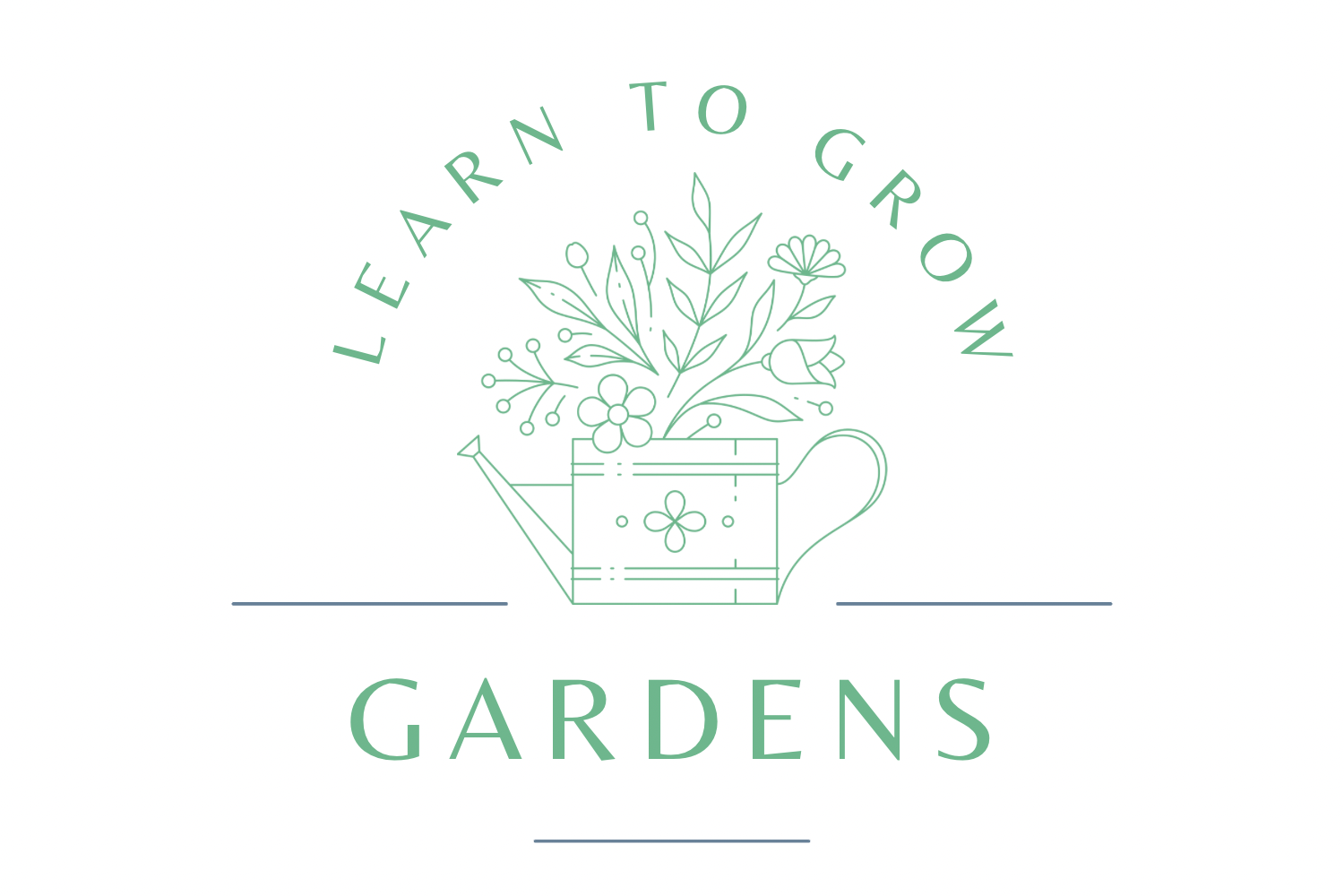DIY Seed Starting Mix: The Best Soil Recipe For Seedlings

When you’ve been a gardener for awhile, it’s inevitable that you’ll venture into the world of seed starting. There’s something so fulfilling in starting a plant from a teeny, tiny seed and watching it grow over the coming weeks and months. Plus, starting plants from seeds costs a fraction of what it would cost to buy those plants from a nursery.
Recently, I was looking for even more ways to save money on gardening and decided to look into creating my own seed-starting mix. I’ve never looked back!
A DIY seed starting mix is super easy to put together, and a huge savings compared to purchasing bagged soilless mixes for seed starting.
This post may contain affiliate links. You can read my full policy here.
Is seed starting mix necessary?
I get it. Taking the time and effort to put together a custom mix for seed starting seems like an unnecessary complication, when seeds grow all the time in less than ideal conditions outdoors (I’m looking at you, pesky cement-crack dandelions!)
Just because seeds *can* grow in some crazy conditions doesn’t mean all seeds will. And if we’re taking the time, effort and money to try growing our own seeds, we want as many of those seeds to germinate and grow as we can.
Seed starting mixes are the perfect blend of ingredients to give seeds their best chance.

Some benefits of seed starting mixes include:
- Being lightweight and airy, allowing delicate new roots to sprout and grow
- Holding an even level of moisture
- Being sterile, which limits the likelihood of losing seedlings to fungus or disease early on
- Free from fertilizers, which can burn sensitive new seedlings
Can I use potting soil instead of seed starting mix?
Although potting soil can be used in a pinch, seed starting blends are a better choice for starting seeds. Seed starting mixes are a finer texture and are lightweight and airy, which allows delicate new roots to grow. Additionally, potting soils often contain fertilizers, which can burn sensitive new seedlings.
One of my favorite benefits in making your own seed starting mix is the ability to customize the mix to suit your needs.
I’m going to share with you a basic recipe, but feel free to change it up a bit and make it your own! I’ve also included instructions for turning leftover seed starting mix into potting soil for young plants. I’ve included it farther in this post.
As for changing up this basic recipe and making it your own, there are a few amendments you can add to the 3 main ingredients to change the nutrient profile.
Some of these include:
- Bone meal – encourages strong root development
- Blood meal – aids in healthy root and leaf growth
- Worm castings – full of nutrients and beneficial microorganisms
- Kelp meal – contains plant growth hormones to encourage root development
I would suggest, however, that you try the basic recipe a few times first, to get a feel for how you like it. After that, make it your own!
What does seed starting mix contain?
Believe it or not, a basic DIY seed starter mix comes down to just 3 basic ingredients: vermiculite, perlite, and coconut coir.
**Note: A lot of seed starting mixes, including commercial blends, contain sphagnum peat moss. Although the use of peat moss is very popular in gardening, it is not a sustainable product, growing only 1mm per year. In addition, harvesting from peat bogs releases huge amounts of carbon dioxide, which contributes to high levels of greenhouse gases. Coconut coir is made from the outer husk of coconuts and is an excellent substitute for peat moss, as it has many of the same benefits/uses and is a readily renewable product.

Vermiculite

Vermiculite is made from dry silicate, and is excellent at absorbing and holding moisture. We add it to our seed starting blend to hold an even level of moisture between watering, and keep our seedlings from drying out or becoming water logged.
Perlite

Perlite is volcanic glass, and is incredibly lightweight. We add it to our seed starting mix to make the blend lighter and more fluffy, which allows delicate new roots to spread out and grow.
Coconut Coir

Coconut coir, also called coco coir or coconut fiber, is made from the outer shell of coconuts. It’s the base of our seed starting mix recipe. It is lightweight and fluffy, and holds water really well. Sometimes too well, which is why we need to amend it a bit for seed starting. With the addition of perlite and vermiculite, you have the perfect blend of a lightweight, fluffy, moisture retaining mix.
How to make seed starting mix
Supplies:
- Coconut coir (this one is my favorite )
- Vermiculite (this one from Burpee is great)
- Perlite (I use this one)
- Large mixing bowl
- Spoon
To make your own soil-less mix for seeds:
The first step in making our mix is to turn the hard brick of coco coir into a light, fluffy mix. We do this by pouring warm water on it, which will cause it to expand.
After the coco coir has expanded, fluff it up with a fork, breaking up any hard clumps. Add more warm water, if needed.
Now mix 8 parts coconut coir, 1 part vermiculite and 1 part perlite in a large container. You don’t have to be too exact with these measurements. I use whatever I have on hand to measure, like a disposable cup or bowl. Just make sure you’re measuring 8 parts of the coconut coir, and adding one part each of the vermiculite and perlite.
Mix everything together really well. When you’re done, it should look like this.

Add water to your mix, stirring it to avoid dry spots, and then you’re good to go! Add it to your plastic pots, DIY seed starting containers or your newspaper pots, and place them in seedling trays. I like to use these 10 20 trays.
Do you need to fertilize seedlings?
One of the benefits of seed starting mixes is that it is free from fertilizers, which can easily burn tiny seedlings. Seeds also contain all the nutrients a seedling will need until it grows it’s second set of true leaves. This is when you should begin feeding with a diluted fertilizer mix, to give them their best start when planting in the garden.
For more in depth information on feeding seedlings, see our post on how to start seeds.
For a general guideline, the recommendations for fertilizing seedlings are:
- Start fertilizing when seedlings have grown their second set of true leaves
- Use a delicate liquid fertilizer recommended for seedlings. Seaweed fertilizers are excellent for seedlings, because they won’t burn delicate roots
- Start fertilizing at a rate of 1/4 the recommended amount, and water from the bottom, to avoid overwatering and disturbing roots
- Continue fertilizing every week, gradually increasing the concentration of your fertilizer until you’ve reached full strength.
- Water with plain water when not fertilizing
- If seedlings become leggy and they are receiving adequate light, reduce your fertilizing schedule to every other week and see if symptoms improve

How do you make potting soil from seed starting mix?
As we discussed above, seed starting mix and potting soil are not the same. One is a perfect blend for seedlings, while the other is formulated for growing or mature plants.
However, if you’ve potted up all your seedlings and have leftover mix, you may be wondering if you can use it as potting soil.
This can easily be done with a little amending.
One of the differences between a seedling mix and potting soil is the nutrients available. Seed starting mix is lacking in nutrients. This is partly because seeds contain all of the nutrients they need for germination inside their shells.
Additionally, fertilizers can easily burn new seedlings. When a seedling has grown enough in size that it’s first leaves appear (cotyledons) and it’s used up it’s nutritional stores, we want to use a delicate fertilizer that won’t burn new roots. Seaweed fertilizers are a great option for new seedlings. You can read more about seaweed and kelp fertilizers here, including their benefits in the garden and how to use them.
For growing plants, a stronger organic fertilizer can be used, and is often found in traditional potting mixes. These fertilizers are too strong for seedlings, but perfect for larger plants.
In order to use seed mix as a potting mix, we need to amend it with some nutrients for healthy plants. We can do this by adding worm castings or compost and an all-purpose fertilizer, such as Bio-tone (a personal favorite!)
To do this, mix 2/3 seed starting mix with 1/3 worm castings or potting mix. Add ¾ tablespoon of an all-purpose, slow-release fertilizer per quart of your final mix (or according to label instructions.) Mix everything together really well, and moisten before use.
Final thoughts
If you’re new to seed starting, I recommend checking out our post on how to start seeds. Starting your own seeds can be a great way to save money on gardening. It also allows you to control the process and materials used from the very beginning.
If you’re interested in purchasing seeds, they can be found at your local garden center year round, or at home improvement stores every spring.
I personally prefer to order seeds online. Online seed companies have a greater selection than what is available in store, and many offer high-quality seeds.
To order seeds online, I recommend the following companies:
- Baker Creek Heirloom Seeds (I love their purple carrots)
- Johnny’s Seeds (this microgreen blend is a favorite of mine)
- Botanical Interests (these smoothie mix baby greens can even be grown indoors!)
- Park Seed (Apricot Lemonade cosmos are one of my summer favorites)
Related:
How long does it take to grow vegetables from seed?
Newspaper pots for seed starting
Free printable seed starting chart

FAQ
What is the difference between seed-starting mix and potting soil?
Although they may seem very similar, seeds starting mix is a finer, lighter blend than potting soil. This makes it easier for delicate seedlings to work their roots through the soil. Potting soils often contain fertilizers, as well, which can burn delicate seedlings.
What’s the best mixture for starting seeds?
The best seed starter mix contains a mixture of coconut coir or peat moss, and vermiculite and perlite. This mixture is light, fluffy and finely textured, which is perfect for the roots of delicate seedlings to push through and grow.
Can I use regular dirt to start seeds?
Dirt, or garden soil, is not recommended for starting seeds. Native soil often contains weed seeds, is not the right consistency for delicate seedlings to push through and grow, and it can contain bacteria that can cause a condition known as damping off, which leads to seedling death.
Can you use any soil for seedling starting soil?
A good quality seedling starting soil is recommended for starting seeds. Seed starting mixes contain the perfect blend for delicate seedlings. This blend is fine textured, lightweight and fluffy, and free from fertilizers that can burn sensitive roots.
Is Miracle Gro potting mix good for starting seeds?
Miracle Gro potting mix is not recommended for starting seeds. The mixture is too heavy, course and thick for young seedlings to germinate and grow, and the mixture contains synthetic fertilizers, which can burn sensitive seedlings and their roots. A mix formulated for seed starting is recommended.
Can I use this seed starting mix for soil blocks?
Soil blocks require a slightly different mix than our basic seed starter mix, to keep them from crumbling or falling apart. You can find more information on soil blocks here.
What is the best soil for starting seeds indoors?
The best soil for starting seeds indoors is a soilless seeds starting soil. This mix is typically made from a mixture of peat moss or coco coir, vermiculite, and perlite. Worm castings may be added to provide nutrients to seedlings as they mature.
What is the best seed starting mix for vegetables?
The best seed starting mix for vegetables is a soilless mix that is lightweight and free from synthetic fertilizers. This mix can be made from coco coir or peat moss, vermiculite, perlite, and worm castings.


Hi, I’m Liz! I’m a Master Gardener, Garden Coach, and Professional gardener. I’m also a mom of 4 who likes to putz around in my garden, growing food and flowers. You can read more about me here.
I started Learn To Grow Gardens as a resource for anyone looking to find more success in the garden. You can find gardening help, inspiration, and community through my Facebook Group, Instagram page, and by joining my email list below.
As an Amazon Associate, I earn from qualifying purchases.








